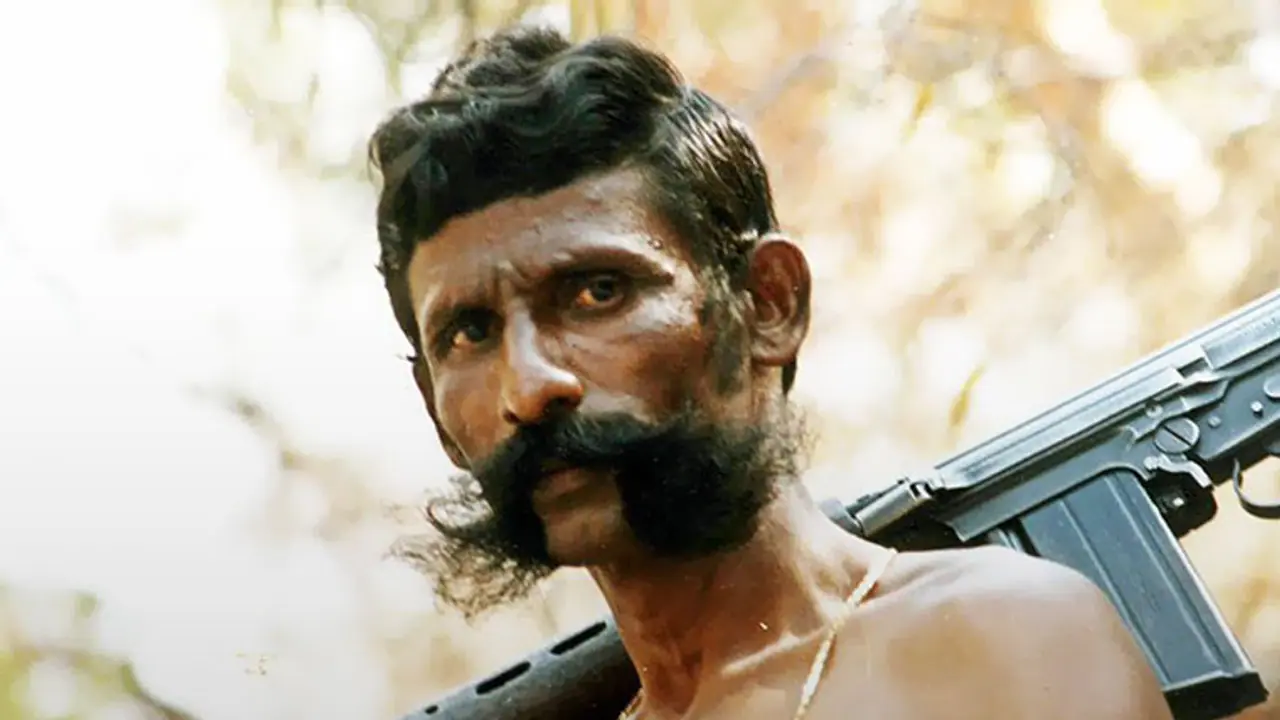Author K Vijay Kumar spearheaded Operation Cocoon, launched to nab the forest brigand Veerappan and his associates. His new book has details of the ruthless killings and high-profile kidnappings masterminded by Veerappan.

Forest brigand Veerappan could identify the personnel of Tamil Nadu STF hunting for him simply by listening to their voices and the force had to come up with a 'no-word-only-number' solution to foil his attempts.
This and several other interesting details of techniques adopted during the operation by the Tamil Nadu Special Task Force (STF), which planned and executed his killing, and also about the bandit find mention in a new book.
"Veerappan: Chasing the Brigand" by K Vijay Kumar, the man who spearheaded Operation Cocoon, describes in detail the ruthless killings and high-profile kidnappings masterminded by Veerappan, including the 108-day ordeal involving Kannada superstar Rajkumar.
Published by Rupa, the book relives the various incidents that shaped Veerappan's life - from his birth in Gopinatham in 1952 to his death in 2004 in the shootout in Padi.
"Veerappan had a very cost-effective 'I-Com' wireless set - similar to the equipment employed by the LTTE, among others - that allowed him to tune into the STF's communications," says Kumar.
"His gang members had revealed in many a debriefing post-surrender that he could identify our personnel simply by listening to their voices. He particularly enjoyed the very chaste Tamil spoken by (Inspector) Karuppusamy. The bandit had apparently laughed heartily when an SP of the STF was nearly washed away in a flash flood," he writes.
But now Veerappan was flummoxed to hear only numbers and no words after the STF came up with a simple solution to counter his listening in.
"The over 60-sq-km that fell within these 16 squares were divided into smaller squares. Then we superimposed an imaginary clock on the overall square for easy reference. We used clock positions to refer to our locations, which were easily understood by our teams, but not by others listening in."
"At a loss to understand the barrage of numbers, Veerappan now had to constantly worry about the direction of a possible attack by the STF. To add to his misery, the teams would sometimes deliberately lapse back into Tamil and pretend to have spotted his couriers, even when they hadn’t. Veerappan was always on the edge. After all, we were messing with his mind," writes Kumar.
Another STF innovation, he says, was the use of LCD on caps during the night patrol.
"LCDs, available in TV remotes, are invisible to the naked eye, but when seen through night-vision devices, they glow like stars. When the teams maintained strict radio silence at night, this innovation proved crucial in differentiating friend from foe," he says.
According to Kumar, Veerappan's spies, who tracked the movement of any man or beast in their neighbourhood, were rattled by STF's new tactics.
"They had never seen so many STF men per square inch. The six-member teams were too small to stage a massive raid, but were big enough to strike into the enemy's comfort zone and wreck his peace of mind," he writes.
The square deployment was done after some incidents of friendly fire and poor communication as many small STF teams were milling around in a small swathe.
"The issue was resolved by extensive training and demarcation of responsibilities. The area was divided into 16 squares of 2 km by 2 km, with a kitchen for every six squares. Each square was allocated to two six-member teams - one on stand-to and the other on standby mode.
"In the STF's long history, teams had never had such small and well-defined turfs. Each team was in constant contact with the others. It was understood that if Veerappan attacked any team, the other 30 would rush in to its aid in overwhelming force," says Kumar.
